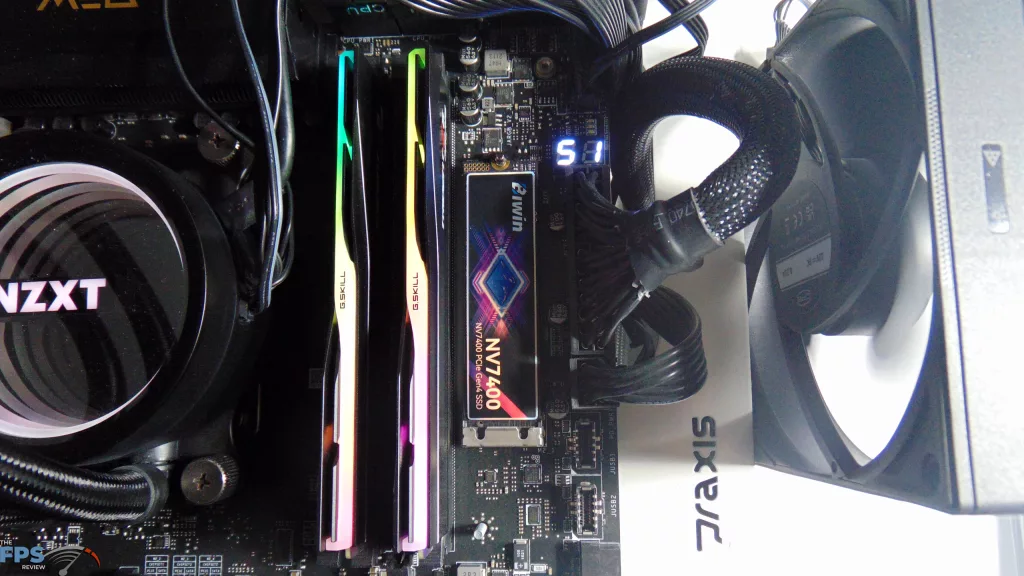
Introduction
The Biwin Black Opal NV7400 PCIe Gen4 M.2 NVMe SSD is our first look at a made-by-Biwin model SSD in their Black Opal line. The Biwin Black Opal NV7400 2TB PCIe Gen4 M.2 NVMe SSD (P/N: BNV740002TB-RGX) has a max sequential read speed of up to 7,450MB/s and a max sequential write speed of up to 6,500MB/s in a DRAM-less design, using HMB and NVMe 2.0 over PCIe Gen4×4, based on the MAXIO MAP1602A controller and Micron B58R TLC 3D NAND Flash at $119.99 listed pricing.
BIWIN Storage Technology does its own IC packaging and testing and is a manufacturer of flash memory, DRAM, and SSDs. Biwin has a complete lineup of M.2 2280-sized SSDs, up and down the performance spectrum from PCIe Gen3x4 up to PCIe Gen5x4. There are currently two series of SSDs, the Mainstream series and Biwin’s Black Opal lineup, geared for gaming. It is the Black Opal series we will look at today.
Starting at the top, you’ll find the Black Opal X570 PRO, Black Opal X570, and Black Opal X570H, all of which are PCIe Gen5x4 SSDs. Under the Black Opal X570 sits the Black Opal NV7400 Gen4x4 SSD that we are reviewing today, and below that is the Black Opal NV3500, which is a Gen3x4 SSD. Therefore, the Black Opal NV7400 is the only PCIe Gen4x4 SSD Biwin currently has in its Black Opal series.
The Biwin Black Opal NV7400 PCIe Gen4 x4 M.2 NVMe SSD is Biwin’s flagship gaming SSD in the PCIe Gen4x4 performance range based on NVMe 2.0. Biwin has designed this SSD in a single-sided design to save space and maintain compatibility with desktops, ultrabooks, gaming laptops, nd other devices in the mainstream. The Black Opal NV7400 is compatible with storage on PS5 consoles and gaming devices. It is geared for DIY enthusiasts and performance for gaming and content creation.
There are two important aspects of Biwin SSDs: the high TBW (Total Bytes Written) for endurance, as well as the rigorous testing that Biwin puts in place to guarantee data safety. The Black Opal NV7400 undergoes continuous high-temperature read/write speed tests of 300 hours, 3000 cycles of abnormal power-off tests, and 6000 cycles of sleep/awake tests. Biwin uses high-quality materials, and also package-testing integration, production control, and other testing scenarios. Check out the latest available pricing below.


Biwin Black Opal NV7400
There are four capacities of the Biwin Black Opal NV7400 offered: a 512GB model, a 1TB model, a 2TB model, and a 4TB model, so 4TB is the maximum capacity, which is perfect for large game drives. The performance offered is different at each capacity, as well as endurance, so here is how it all works out.
| 512GB | 1TB | 2TB | 4TB | |
|---|---|---|---|---|
| Sequential Read Speed | 7050 MB/s | 7400 MB/s | 7450 MB/s | 7400 MB/s |
| Sequential Write Speed | 4200 MB/s | 6500 MB/s | 6500 MB/s | 6500 MB/s |
| Random Read Speed | 800K IOPS | 1000K IOPS | 1000K IOPS | 900K IOPS |
| Random Write Speed | 800K IOPS | 900K IOPS | 900K IOPS | 900K IOPS |
| Endurance (TBW) | 500 TBW | 1000 TBW | 2000 TBW | 4000 TBW |
From this table, we can see that the sequential read speed varies slightly, with the 512GB model being the slowest, but still offering 7GB/s of bandwidth. The sequential write speed is much lower on the 512GB model; however, all other models match performance at 6500MB/s. The 2TB model we are testing today has the fastest speeds on both sequential read and write performance, so the Biwin Black Opal NV7400 is technically the fastest drive in the lineup. The endurance ratings are also great for all drives, with the 2TB model at 2000 TBW and the 4TB model at 4000 TBW; this is a great level of endurance rating in this class. Biwin has a 5-year Warranty on the drives, and MTBF is 1.5 million hours.
The Biwin Black Opal NV7400 is a standard-sized M.2 2280 SSD, and runs on the PCIe Gen4x4 interface and uses the NVMe 2.0 protocol. This is a DRAM-less design, so there is no dedicated DRAM cache; instead, the Biwin Black Opal NV7400 uses Host Memory Buffer (HMB) and an SLC cache. The Biwin Black Opal NV7400 uses Micron B58R TLC (FortisFlash) 3D NAND Flash. The Biwin Black Opal NV7400 uses Biwin’s Smart Cache Mechanism, which is a system of high-speed caching using the SRAM. With zip data compression technology, it intelligently compresses data streams to avoid slowdowns and failed writes. It also supports ECC and LDPC algorithms.
The Biwin Black Opal NV7400 is based on the Maxiotek (MAXIO) MAP1602A Falcon Lite controller, specifically the MAP1602A-F3C variant. The MAXIO MAP1602 controller is a 4-channel DRAM-less controller designed for more budget-oriented entry-level to mainstream SSDs with power efficiency in mind. The Biwin Black Opal NV7400 uses the F3C variant of the MAXIO MAP1602 controller, which is the fastest version supporting NVMe 2.0. The other variants of the MAXIO MAP1602 controller, F1C and F2C, support NVMe 1.4.
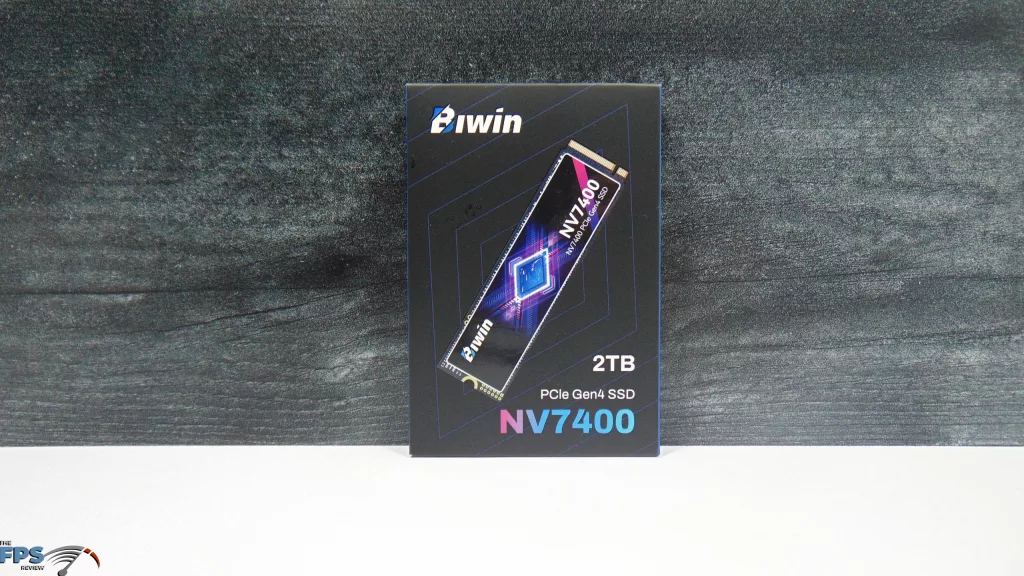

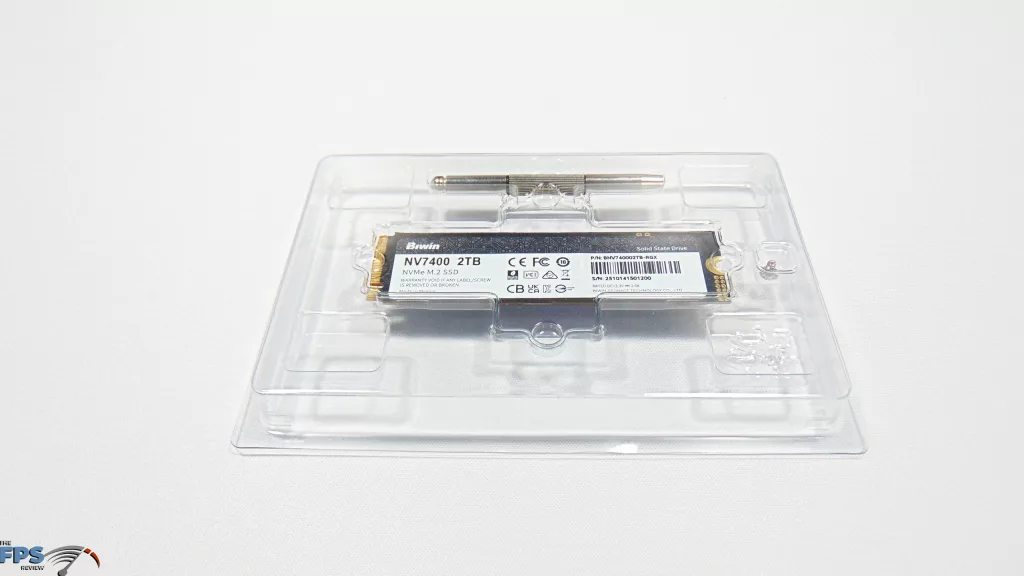
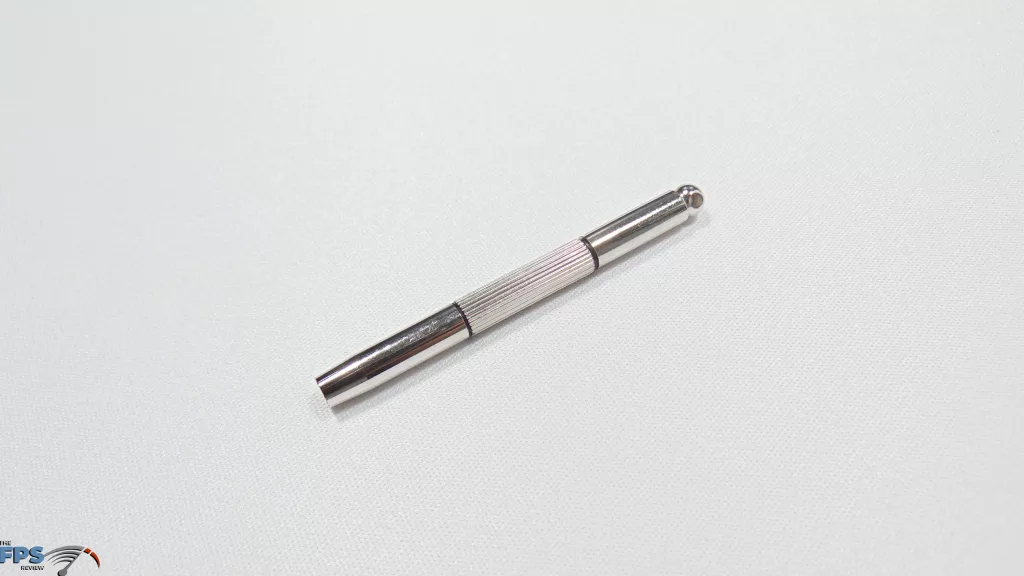
The Biwin Black Opal NV7400 2TB PCIe Gen4 M.2 NVMe SSD comes in a very colorful box, with a synthwave color theme, which looks quite nice. On the front, the capacity is stated, and on the back, a window to see the SSD in the box as well as the label. It displays the capacities offered, as well as all the primary speeds and feeds, so that is great to see. In the box, you do get an m.2 screw, which is becoming more of a rarity these days, as well as a tool to remove motherboard standoffs, which is neat.
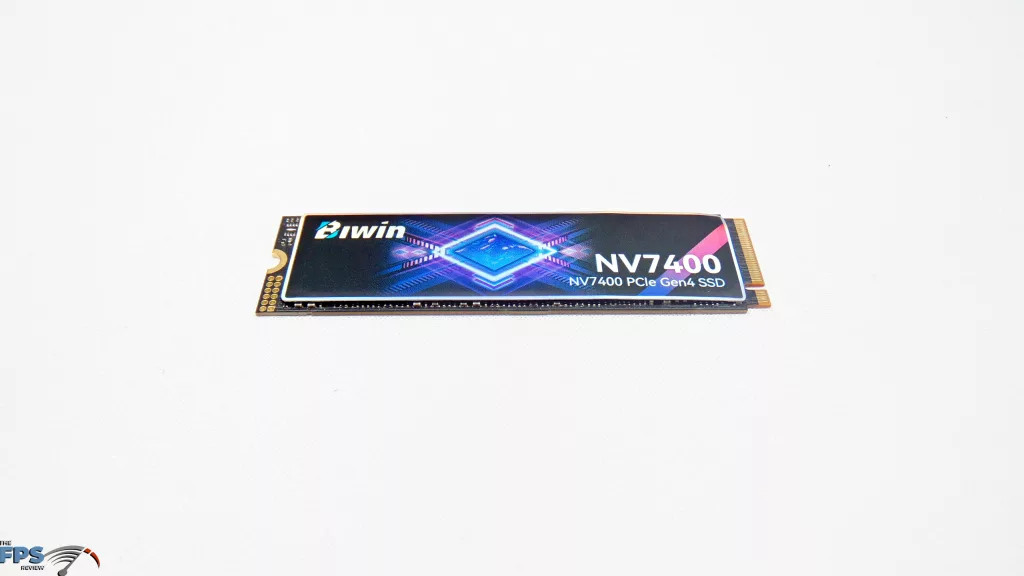
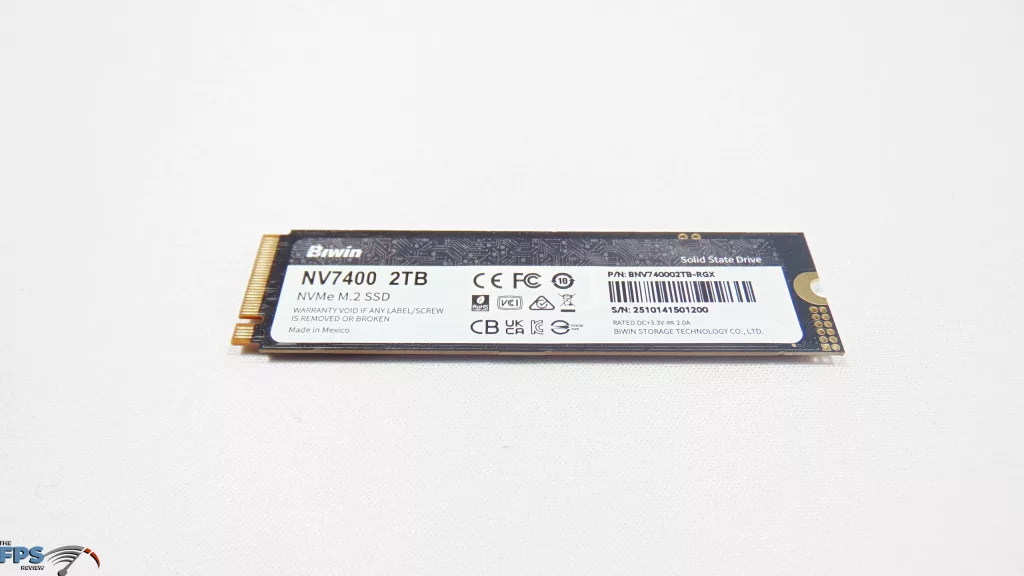

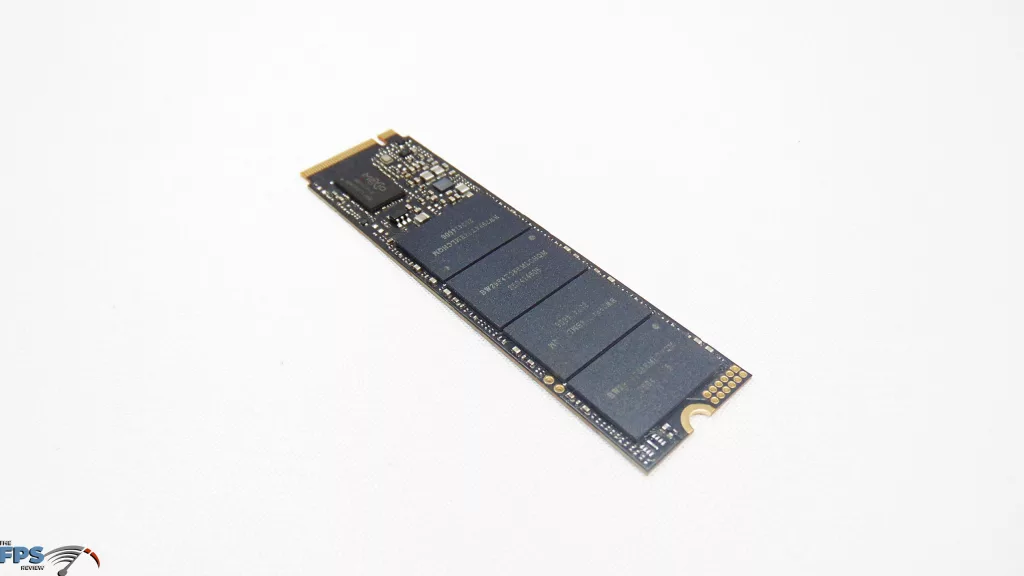


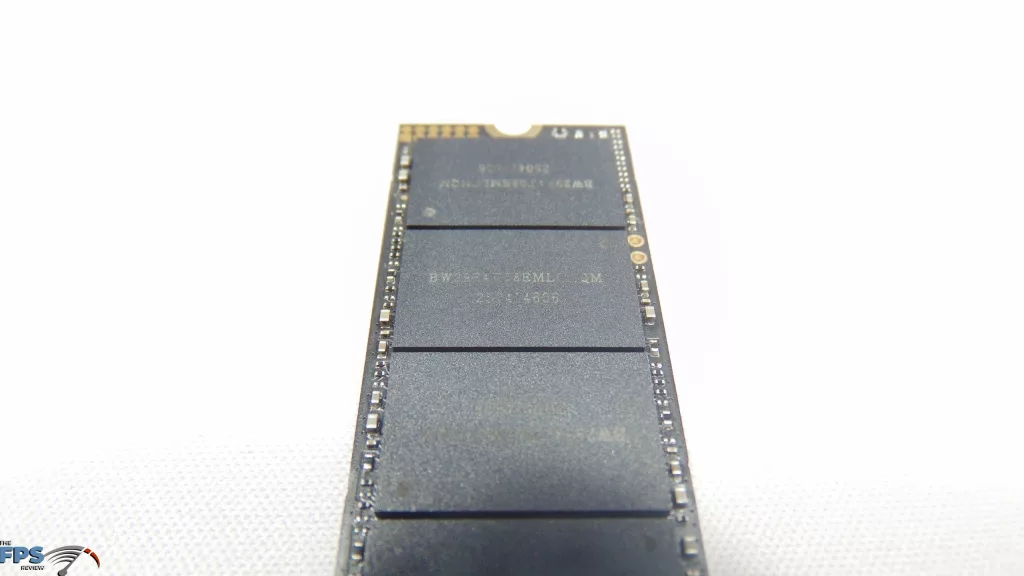
The Biwin Black Opal NV7400 2TB PCIe Gen4 M.2 NVMe SSD does not have a metal heatsink option; instead, it comes with Biwin’s Graphene Thermal Pad. The graphene thermal pad is 0.5mm thick and provides heat to spread out. In addition, the Biwin Black Opal NV7400 includes an intelligent temperature control algorithm that dynamically regulates operating temperature. In the pictures above, you can see that it is one-sided. The controller reads MAXIO MAP1602A-F3C, and the 3D NAND flash reads BW29F4T08EMLCHQM. You can also download software from Biwin called Biwin Intelligence Software. This is a multifunctional management software and provides a lot of options like firmware update, data migration, performance testing, and much more. We’ll take a look at it at the end.
